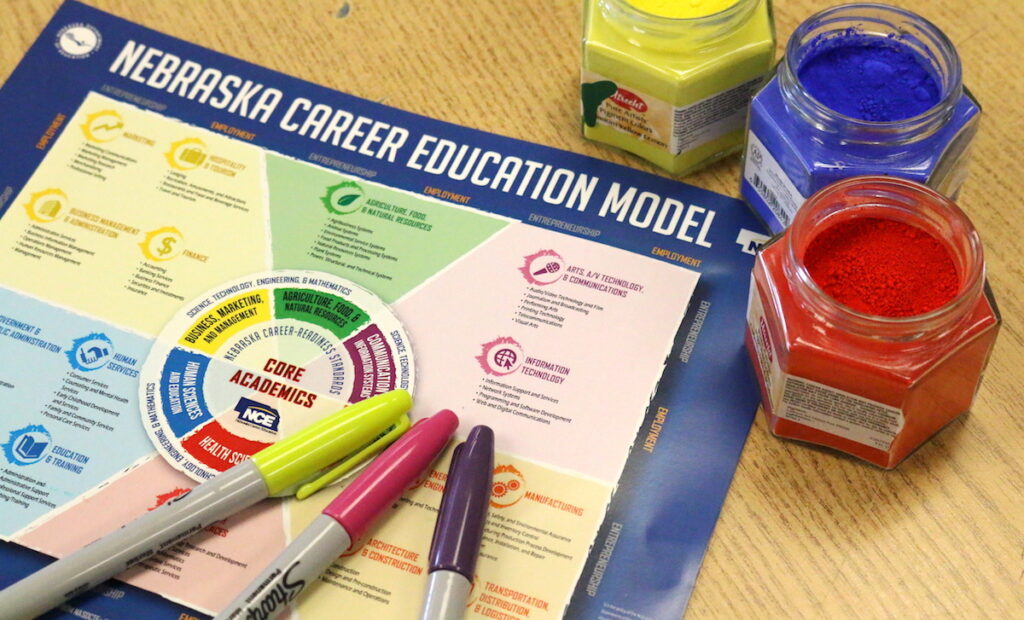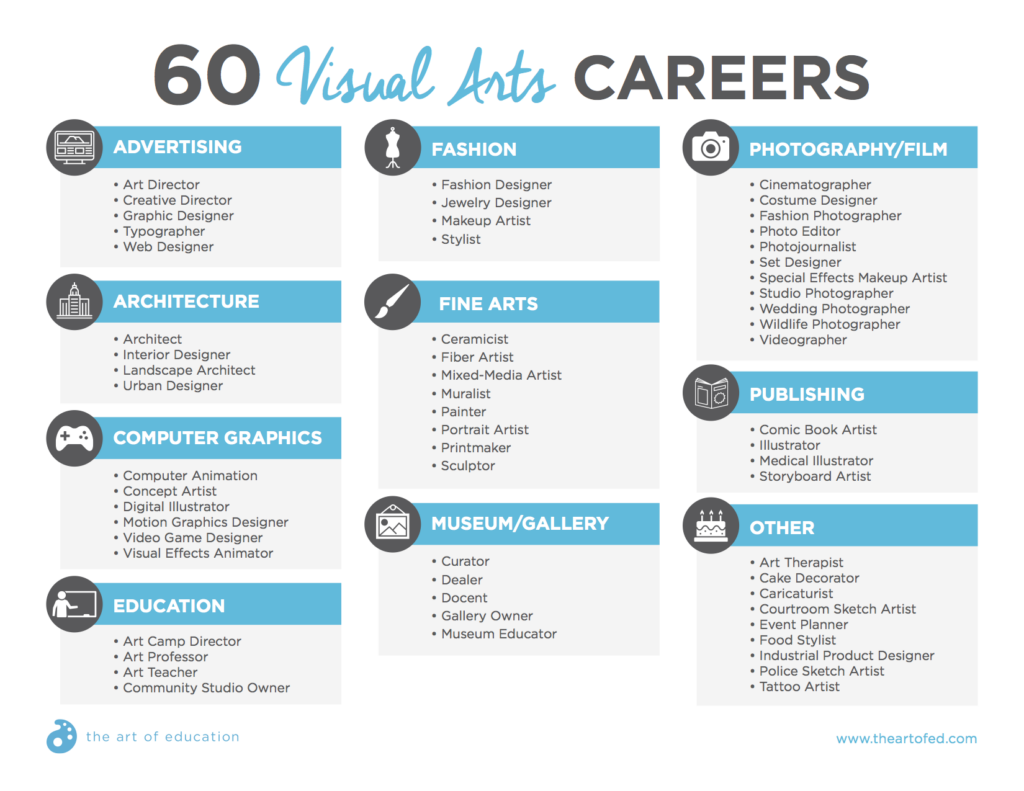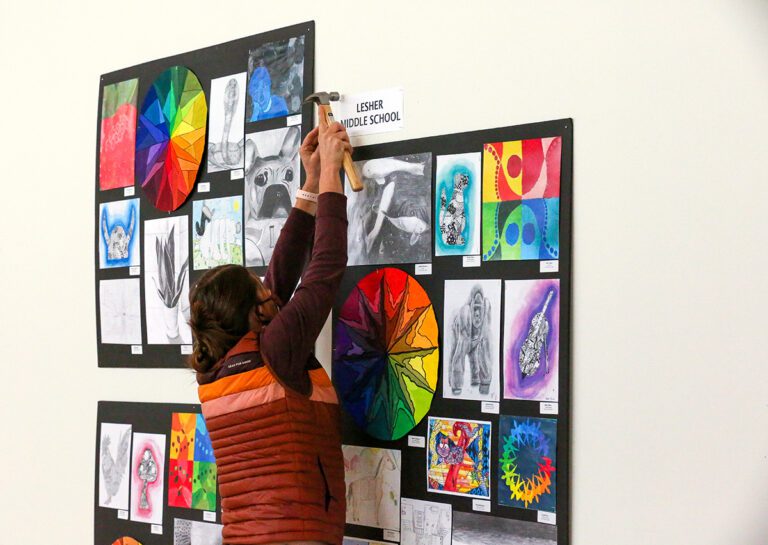Recently, I was sitting at a district in-service session with a CEO from a corporate business. While this might sound strange, more states and school districts are adopting career readiness standards. These standards allow students to identify future pathways and career clusters to fit their interests and skill sets. School districts are relying on elective teachers to instill and transform students’ career readiness, and art plays a huge role!
Elective courses today will play a huge part in the careers of tomorrow. Are you doing your duty to set your students up for success?

There are so many skills students practice in the art room that will transfer to their workplace upon graduation from high school or college.
Skills the Art Room Teaches for a Career-Ready Individual
1. Critical Thinking
2. Communication
3. Technical Skills
4. Problem Solving
5. Collaboration
6. Innovation
7. Creativity
8. Technology Skills
9. Productivity
10. Leadership
As art teachers, it is our job to help students identify these skills as transferable and to name some specific careers where these skills might be used. So often, students think the only art-related career to pursue is becoming an artist. In reality, art class has the potential to fuel so many other future occupations! Often, our students don’t even know what’s out there!
This isn’t something you need to hit on during every lesson or unit you teach, but it’s important to have the discussion early and often.
You can download a copy of 60 arts related careers below to post in your classroom. It’s a great way to get the discussion going!

3 Ways to Encourage Art Careers in the Classroom
Besides holding honest discussions with your students, there are many other ways you can encourage students to look at artistic careers. Here are just a few.
- Set up a Project Based Learning experience with a local business.
Allowing students to get some real, hands-on experience is a great way to show them you can make a living and be creative at the same time. Check out the course Project Based Art Room to get started with these types of ventures in your classroom. - Allow students to participate in art internships.
Working closely with someone in an arts-related field can help students figure out what a creative career might look like in terms of daily tasks, work-life balance, and more. - Bring in visiting artists or artists-in-residence.
The more exposure students have to practicing professionals, the more they will have opportunities to observe and ask questions. This can get their wheels turning!
It’s never too early to get your students thinking about the possibilities for their futures! At the elementary level, it can be as simple as naming different careers. As students get older, you can start talking with them about their unique strengths and skills and how those may come into play. Remember, discussing career options in the arts provides students the opportunity to explore all of their possibilities!
How do you approach career education in the art room?
What art careers would you add to the list?
Magazine articles and podcasts are opinions of professional education contributors and do not necessarily represent the position of the Art of Education University (AOEU) or its academic offerings. Contributors use terms in the way they are most often talked about in the scope of their educational experiences.





